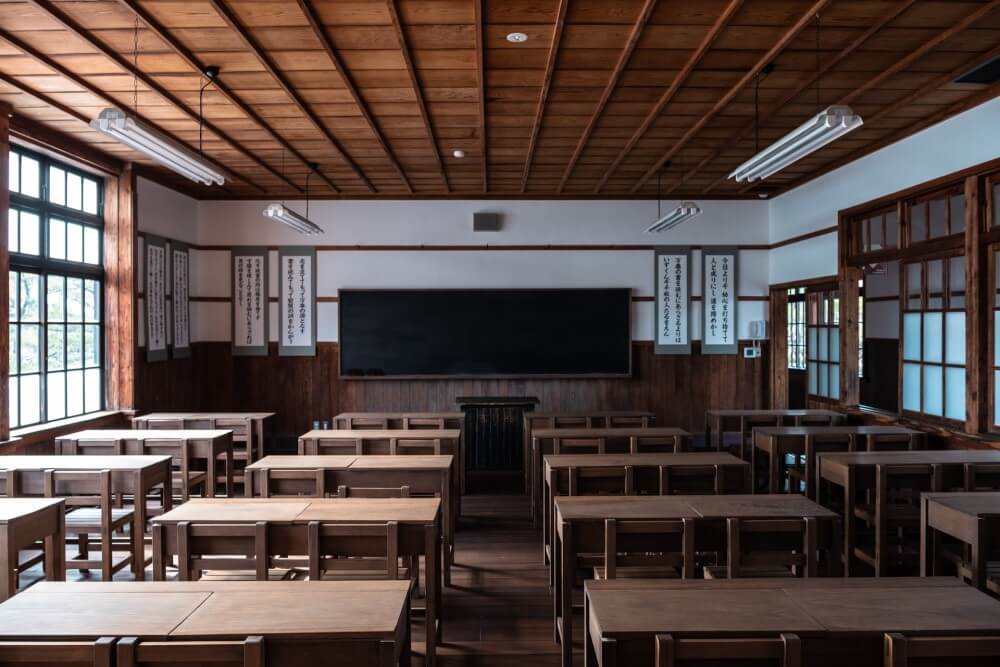- Life & Culture
Maths In Japan – Counter Systems & Teaching
People often assume that maths is the same across the globe, however, many different countries have different styles of counting and some have more than one numerical system.
Learning these systems before you travel to Japan is beneficial, as numbers are used everywhere, much like in most countries. Whether it be telling the time, ordering food of a specific amount or finding certain buildings, the numerical systems need to be known.
Before learning how to count in Japanese, it’s worth noting that sometimes Arabic numerals are used in Japan, however, there are certain contexts for the use of specific numbers.
What Are The Different Japanese Counting Systems?
There are two different types of numerical systems in Japan, the Sino-Japanese system and the Native Japanese number system. Each of these systems has a different original, Sino-Japanese has Chinese origins, whereas the Native Japanese system has Japanese origins as its name suggests.
Sino-Japanese Counting
The Sino-Japanese number system uses counters, this applies to certain objects or people you may be counting. The main counters used in this system are people, small objects, medium objects, animals, time and money. Using this number system means that you need to know each type of counter and the language within them when.
There are some unique counters, however, learning the Japanese language as a whole will help to know when certain counters are used in the correct context.

Small Objects – Ko (~個, こ)
Ko (~個,こ) counting is associated with small objects, often that are round as well. This is known as the most useful counter within this system and can range from fruit to small sports balls.
People – Nin (人, にん)
Nin – (人, にん) counting is used for counting people. However, this isn’t used for counting one person or two people. The system for that is hitori (一人, ひとり) for one person and futari (二人, ふたり) for two people. For further people counting you’d say the number then the counter.
Medium Size Animals – Hiki (匹, ひき)
Hiki – (匹, ひき) counting is applied to medium-sized animals such as dogs and cats. However the pronunciation changes depending on the number before the counter, and it can change from “hiki” to “piki” or “biki”.
Money – En (円, えん)
The counter for money is En (円, えん). The number comes before the counter when using it to count Yen.
Time – (秒, 分, 時, 月, 年)
Time has several different counters that need to be used for seconds, minutes etc. There are even different counters for days and months in the year.
In regard to telling the time these are the different counters – seconds as 秒 (byou), minutes as 分 (fun or pun), and hours as 時 (ji). For months, you should use 月 (getsu), and years are 年 (nen).
Days are counted using (日), followed by ‘nichi’ for counting days or ‘ka’ for counting calendar days and days beyond 10 use the ‘nichi’ pronunciation. Certain days such as the 1st, 20th and 8th also have their own pronunciations.
1st of the month – Tsuitachi (ついたち)
8th of the month – yōka (ようか)
20th of the month – Hatsuka (はつか)
Long Thin Objects – Hon (本)
Long thin objects such as chopsticks or pencils are counted using the ‘hon’ pronunciation counter. However, there are some exceptions to this rule with specific numbers. Number 3 counter is pronounced as ‘bon’ and 1, 6, 8 and 10 use the counter ‘pon’.
Native Japanese System
The Native Japanese counting system only reaches the number 10, however, it doesn’t rely on counters like the Sino-Japanese system. This is what makes it appealing to non-native Japanese speakers.
You can use this system to count nearly anything, except for people, time and money. Every number in the Native counting system end in つ (tsu), apart from the number 10, pronounced with とう (tou).

Counting to Ten In Japanese
Simple steps that might help you with remembering counters or each number system is knowing the basics of maths in Japan. Knowing how to count to ten in Japanese means you can start using this as a starting point to then build on the Sino counting system with counters for different things.
1-10 Japanese
1
一
いち (ichi)
2
二
に (ni)
3
三
さん (san)
4
四
よん (yon)
5
五
ご (go)
6
六
ろく (roku)
7
七
なな (nana)
8
八
はち (hachi)
9
九
きゅう (kyuu)
10
十
じゅう (juu)
Zero In Japanese – ゼロ
The Japanese say ‘zero’ the same as we do, with the translation being – ゼロ.
However, the word ‘maru’ マルis sometimes used for zero, as this translates to ‘circle’. Similar to the English language saying ‘oh’ for zero, the Japanese use circle in the same instance.
How to Say ‘Number’ In Japanese & Common Maths Terms
Knowing certain phrases around maths and the subject of numbers in Japan will also help when learning how to count, using counters and in general life in Japan. The phrase ‘number’ in Japanese is ‘kazu’ 数 and this is used to state a number or a quantity of something. ‘Suuji’ 数字 is use for cardinal numbers or figures, and the phrase ‘to count’ is ‘kazoeru’ 数える.
Other Japanese maths terms you will find useful are the equation translations, this includes plus, which is プラス ‘purasu’ or ‘tasu’ 足す. Minus is translated into ‘mainasu’ マイナス, equals is ‘wa’ は, ‘kakeru’ 掛ける is translated to multiply, ‘waru’ 割る means divide, ‘hanbun’ 半分 translates to half and point is ‘ten’ 点.

Teaching Maths in Japan
Learning maths and counting in Japanese is challenging, but rewarding. Once you have mastered most of the translations, alongside other parts of the Japanese language, it will become easier and easier to know when counters are used and which translations are ideal for the context of your conversation.
If teaching in Japan seems like something you’d like to do, then contact Interac today to find out more!
About the Author

Brian McDonough is a consultant at Interac, Japan’s largest provider of ALTs (Assistant Language Teachers). Originally from the US, Brian has lived in Japan for over 25 years, giving him a unique perspective on the cultural differences and challenges people face when moving to Japan. He has first-hand experience of working in Japan as an American.
